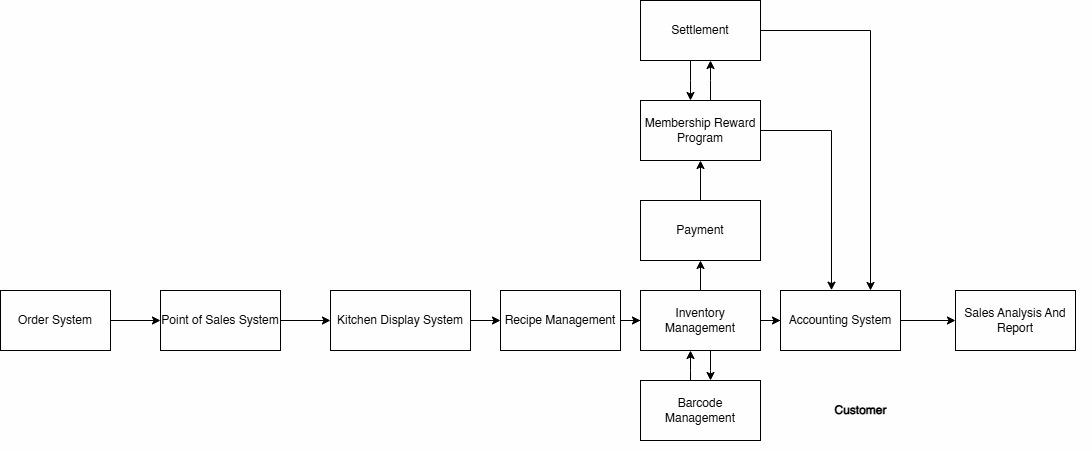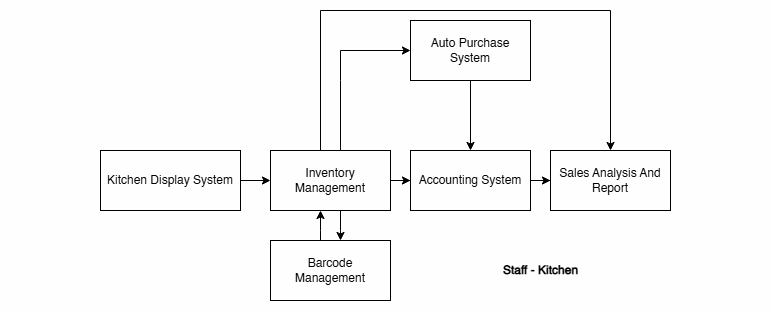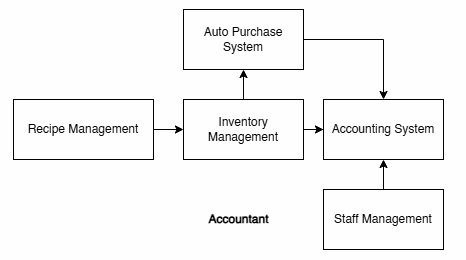𝒫𝒪𝒮 𝒮𝒴𝒮𝒯𝐸𝑀
What is POS SYSTEM ?
Benefits of Using a POS System
Efficiency
Speeds up the checkout process and reduces human error.
Inventory Control
Real-time updates help track product stock levels.
Data Insights
Offers detailed sales reports that help in business analysis and decision-making.
Enables quick transactions and provides loyalty programs for customers.
Integrated Payment
Speeds up the checkout process and reduces human error.
Why We need to using POS System
- Instant Access to Sales Data : Provides real-time insights into sales, helping SME owners track performance, identify trends, and adapt strategies.
- Detailed Reports : Generates automated reports (e.g., profit-and-loss, inventory, employee performance), saving time and offering clarity, ideal for SMEs without dedicated accounting teams.
- Customer Insights : Tracks purchasing behavior, preferences, and visit frequency to help tailor marketing strategies to customer needs.
- Business Intelligence : Analyzes sales trends, seasonality, and customer demographics to inform business decisions and enhance profitability.
Relationship About All System

Customer
When a customer enters the restaurant and places an order, the system generates the order and sends it to the Kitchen Display System (KDS) . After the kitchen receives the order, the system automatically checks if the necessary ingredients are in stock using the Inventory Management System . If the inventory is sufficient, the kitchen proceeds with food preparation based on the standard recipes in the Recipe Management System . Once the dishes are ready, the order is sent to the counter, and the staff delivers the food to the customer's table.
After the customer finishes their meal and is ready to pay, the system checks whether the customer is a member of the restaurant. If they are, the system automatically applies any discounts or promotions , calculating the final amount due. Upon payment, the POS system generates a receipt and prints it for the customer as proof of payment. This receipt, along with the transaction details, is automatically saved into the Accounting System for financial records. Finally, the accounting system generates **financial reports** based on the collected transaction data, helping the restaurant with daily operations and financial analysis.
This process automates the entire workflow from order placement to payment , improving restaurant efficiency , optimizing customer experience , and ensuring accuracy and transparency in financial data.
Staff - Frount of house(FOH)
When a customer orders, the FOH staff sends it to the kitchen via the POS system . The system checks inventory and kitchen will prepares the food. Once ready, FOH delivers the meal.
After eating, the FOH staff checks membership and applies discounts by using the system. The customer pays, and the POS generates a receipt, which is saved in the Accounting System for records and reporting.
This automated process improves efficiency, customer experience, and financial accuracy.
3.drawio.png)
3.drawio.png)
Staff - Kitchen
When a customer places an order, the Front of House (FOH) staff sends the order to the kitchen via the POS system . The system checks the inventory to ensure ingredients are sufficient and prepares the dishes based on the Recipe Management System . If the system detects insufficient stock, it will automatically place an order with the retailer to restock. Once the dishes are ready, the kitchen sends the order back to the FOH, and the staff delivers it to the customer's table.
After the meal, when the customer is ready to pay, the FOH staff checks if the customer is a member and applies any discounts. The customer pays, and the POS system generates a receipt, which is saved in the Accounting System for record-keeping and reporting.
This automated process enhances kitchen efficiency, improves customer experience, and ensures financial accuracy.
Accountant
As the accountant, you oversee several key systems to ensure smooth operations. The Recipe Management System helps track ingredient usage and costs for each dish. The Inventory Management System monitors stock levels, ensuring ingredients are available for food preparation. If inventory is low, the Auto Purchase System automatically generates orders to replenish stock from suppliers.
The Accounting System records all financial transactions, including sales, expenses, and payments, generating reports for financial analysis . Staff Management tracks employee hours, payroll, and performance, integrating with the accounting system for accurate wage calculations.
This integrated approach helps streamline the restaurant's operations, manage costs, and maintain accurate financial records.


Manager
As management, you are responsible for coordinating and overseeing the overall operations of the restaurant. The Recipe Management System helps control ingredient costs, optimize dish recipes, and ensure consistency in food quality. The Inventory Management System tracks stock levels, ensuring timely supply of raw materials and preventing overstocking or shortages.
The Accounting System records all financial transactions and generates daily and monthly financial reports for financial monitoring and budget control. The Sales Analysis system provides in-depth insights into sales data, helping you understand which dishes are most popular, which time periods are the most profitable, and supporting data-driven decision-making.
Finally, the Reporting System consolidates all key data, helping management make strategic decisions based on data and ensuring operational transparency and efficiency.
Boss & Owner
As the Boss/Owner, you are in charge of overseeing the entire restaurant operation. The Recipe Management System helps you control food costs by optimizing recipes and ingredient usage, ensuring consistency and quality across dishes. The Inventory Management System allows you to monitor stock levels in real-time, prevent shortages or excess inventory, and ensure efficient use of supplies.
The Accounting System tracks all financial transactions, generates detailed reports, and helps with budgeting and cash flow management, providing insights into your restaurant’s financial health. The Sales Analysis system offers valuable data on sales trends, helping you identify top-performing dishes, peak business hours, and areas where improvements can be made.
The Cloud-based POS System integrates with all other systems, streamlining order processing, inventory updates, and customer payment. With cloud-based functionality, you can access real-time data from anywhere , allowing you to make informed decisions on the go.
Finally, the Reporting System consolidates all key business data, providing you with comprehensive reports that enable you to make strategic decisions and ensure long-term business success.











